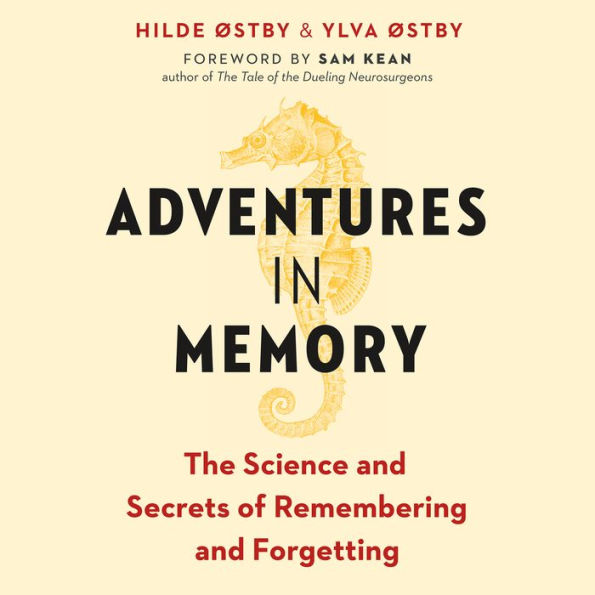"An accessible book, which makes it all the more joyful."
—NYLON
"There are many reasons to read this book, not least because it is fascinating to the point of being slightly disturbing."
—The Times
"Takes the reader on a tour of the past 450 years of memory research."
—The Lancet, Neurology
"Hilde and Ylva Østby are well aware that they are working close to the core of human identity and that is complex terrain. They are fine guides to a forgotten world."
—Sydney Morning Herald
"Poets and novelists got a head start, but for some 140 years now scientists, too, have been wrestling with memory. It’s this struggle that two Norwegian sisters, the novelist Hilde Østby and the neuropsychologist Ylva Østby, tackle in their engrossing book."
—Undark Magazine
"The book is very poetic, interleaving neuroscience with literary classics and personal recollections. The result is much more introspective and emotional than other works on the subject, which can be more obsessively technical but less relatable."
—Science Borealis
"Gorgeously researched and written, this is science told as a page-turner rather than a treatise. Be prepared to emerge with a different sense of your life’s memories. A book you can’t forget."
—David Eagleman, PhD, neuroscientist, New York Times bestselling author, creator, and presenter of the PBS television series The Brain
"It is rare that a book of neuroscience can be equal parts mystery, history, literature, and science, but what could be more appropriate for a deep dive into research on memory? Hilde and Ylva Østby are the 21st-century, neuroscience equivalent of the Brontë sisters."
—Maryanne Wolf, author of Proust and the Squid: The Story and Science of the Reading Brain
"The Østby sisters—one a novelist and the other a neuropsychologist—have combined their strengths to produce a lyrically written and lucidly reasoned exploration of how memory works. Adventures in Memory is full of fascinating characters and indelible scenes that will continue tumbling around in your mind long after you’ve turned its last page."
—Luke Dittrich, author of Patient H.M.: A Story of Memory, Madness, and Family Secrets
"Memory is one of the most important capacities we possess. Sometimes it is right, but often it is terribly wrong. In Adventures in Memory, we learn, through science and stories, just how good and how bad it can be. In this engaging book, the Østby sisters introduce us to some of the leading scientists and famous memory personalities. Be prepared to be educated and entertained at the same time."
—Elizabeth Loftus, PhD, false memory expert and author of Eyewitness Testimony
A novelist and a neuroscientist uncover the secrets of human memory.
What makes us remember? Why do we forget? And what, exactly, is a memory?
With playfulness and intelligence, Adventures in Memory answers these questions and more, offering an illuminating look at one of our most fascinating faculties: our memory. The authors-two Norwegian sisters, one a neuropsychologist and the other an acclaimed writer-skillfully interweave history, research, and exceptional personal stories, taking readers on a captivating exploration of the evolving science of memory from its humble Renaissance beginnings up to the present day. They interview experts of all stripes, from the world's top neuroscientists to famous novelists, from taxi drivers to quizmasters, to help explain how memory works, why it sometimes fails, and what we can do to improve it. Filled with cutting-edge research and nimble storytelling, the result is a charming-and memorable-adventure through human memory.
A novelist and a neuroscientist uncover the secrets of human memory.
What makes us remember? Why do we forget? And what, exactly, is a memory?
With playfulness and intelligence, Adventures in Memory answers these questions and more, offering an illuminating look at one of our most fascinating faculties: our memory. The authors-two Norwegian sisters, one a neuropsychologist and the other an acclaimed writer-skillfully interweave history, research, and exceptional personal stories, taking readers on a captivating exploration of the evolving science of memory from its humble Renaissance beginnings up to the present day. They interview experts of all stripes, from the world's top neuroscientists to famous novelists, from taxi drivers to quizmasters, to help explain how memory works, why it sometimes fails, and what we can do to improve it. Filled with cutting-edge research and nimble storytelling, the result is a charming-and memorable-adventure through human memory.

Adventures in Memory: The Science and Secrets of Remembering and Forgetting

Adventures in Memory: The Science and Secrets of Remembering and Forgetting
FREE
with a B&N Audiobooks Subscription

Editorial Reviews
Product Details
| BN ID: | 2940173394217 |
|---|---|
| Publisher: | Brilliance Audio |
| Publication date: | 03/26/2019 |
| Edition description: | Unabridged |
Videos

